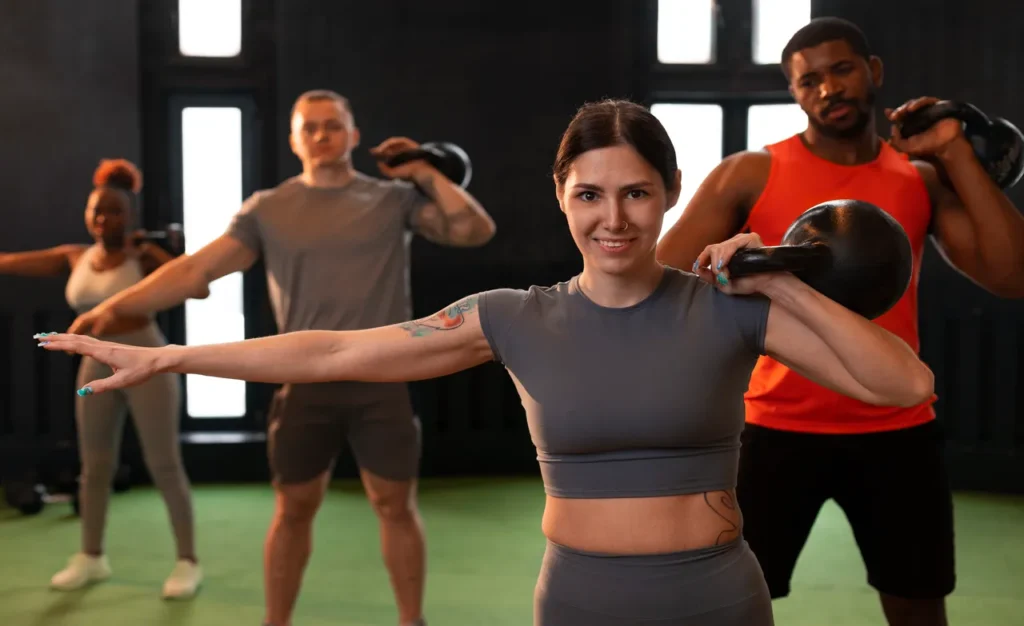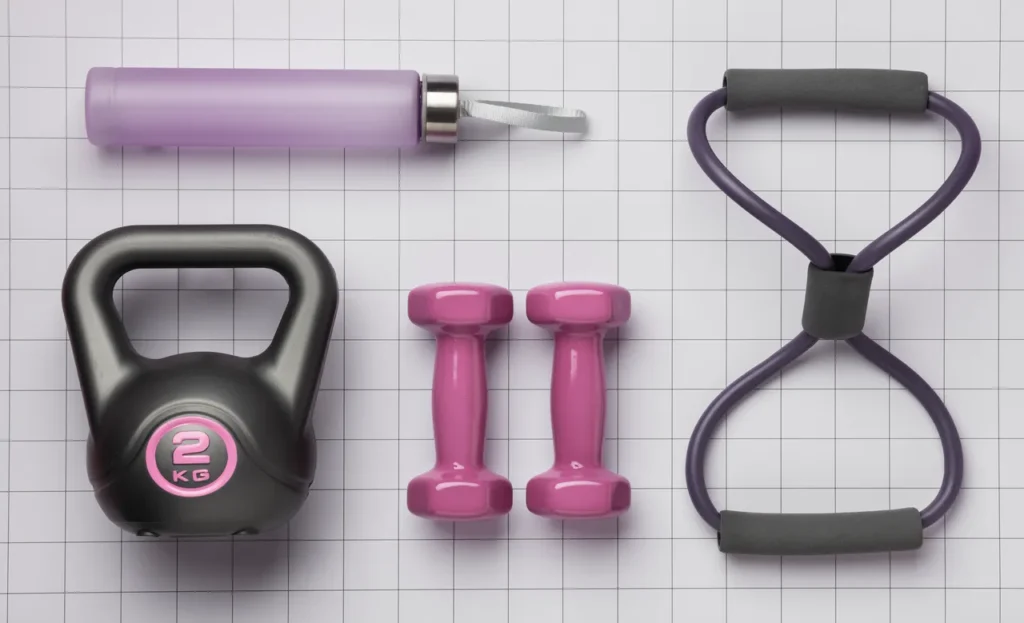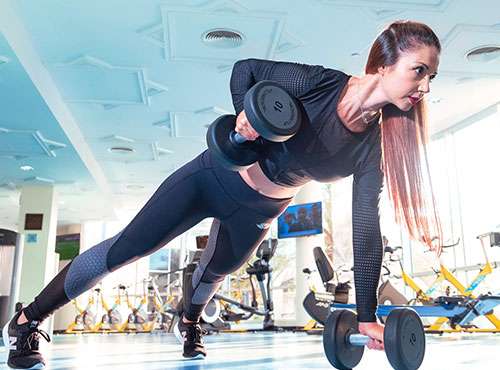Want to improve your yoga? Improve your flow without spending a dime. It might be hard to tell which yoga fitness equipment is worth having, with so many promising to change your practice. Fear not! We’ve selected the best yoga gear for all levels. Whether you’re an experienced instructor or just starting, these best options will deepen your practice and elevate your poses. All the must-have accessories under $50, from yoga wheels that open your backbends to alignment blocks, are covered. Get ready to feel strong, balanced, and serene with the correct yoga gear.
Why Use Yoga Fitness Equipment?

• Improve your practice. Blocks, belts, and bolsters let you adjust positions and stretch deeper. A mat cushions and grips. Equipment improves alignment, prevents injury, and builds strength.
• Create variety in routines. Resistance bands, Pilates rings, and weighted balls spice up your flow. They work distinct muscle groups for targeted or full-body burns. Try different movements and sequences.
• Try it outdoors. Yoga mats, blocks, and straps allow outside practice. Get vitamin D and fresh air by flowing outside. Mats cushion uneven ground. Straps aid wallless poses.
• Construct a home studio. With home yoga gear, you can skip the gym and practice when you want. Storage is little for blocks, blankets, and straps. A non-slip mat defines your space. Relaxing decor improves mood.
• Save money. In the long term, buying essential equipment is cheaper than studio classes. Long-lasting quality components will give you value. Family and friends can borrow your gear.
The yoga fitness equipment improves your practice in many ways. They help you stretch deeper, improve strength, customize routines, flow outside, create a home sanctuary, and save on studio fees. Mindful use can enhance posture, flexibility, injury prevention, and meditation. Adding fitness tools to your flow opens up unlimited possibilities.
Top Yoga Fitness Equipment for Home Use

Yoga has existed for hundreds of years, but you may utilize modern techniques to improve your flow. The correct yoga fitness equipment can elevate your home practice.
Yoga Mats
A decent yoga mat is crucial for home yoga. Find one with enough padding, traction, and support. Choose a yoga mat based on thickness, texture, size, and material.
Yoga Blocks
Yoga blocks enhance posture, stability, and range of motion. Beginners, people with low flexibility, and advanced students wishing to deepen stretches or work on more complex versions can employ them.
Slings and straps
Straps and slings help extend, reach, and explore positions safely. They allow difficult positions while protecting joints and preventing injuries.
Bolsters
Restorative poses, backbends, inversions, and others benefit from bolsters. They deepen muscular relaxation.
Sandbags
Sandbags offer resistance and intensity to your practice. They stimulate and massage muscles while building strength. Use carefully to avoid strain.
Blankets
Yoga blankets warm people in Savasana and cushion knees and elbows on hard floors. They deepen relaxation.
Eye Pillows
Light-blocking weighted pillows over the eyes help relax. Use for meditation or Savasana.
Yoga Wheels
Backbends are softly intensified by wheels opening the front body safely. They allow deeper core and front torso stretches. Use cautiously.
Yoga Swings
Suspension swings provide safe inversion without back or spine stress. They strengthen the core and decompress.
The correct yoga props can improve comfort, enjoyment, and transformation. Explore which improves your practice. Most importantly, listen to your body and don’t overdo it. Happy flowing!
Choosing the Best Fitness Equipment for Your Practice
Select equipment to enhance your practice rather than hinder it when building your home yoga studio. With so many yoga fitness equipment marketed, choosing the right items comes down to your personal needs and preferences. Consider these top picks to complement your flow.
Yoga Mats
A non-slip yoga mat provides padding and traction during floor poses. Look for one with alignment markers if you are new to yoga. Consider thickness and materials – lightweight for travel or thicker for joint issues.
Yoga Blocks
Blocks help adjust poses to your flexibility and stability needs. Cork blocks offer lightness. Wood or bamboo blocks provide sturdiness. Foam blocks add cushioning. Consider your main yoga style and needs.
Yoga Straps or Towels
Straps support proper alignment in seated or standing poses. Towels assist with adjusting the grip. Choose soft, cotton straps and towels over slippery material. Consider length for your body’s proportions.
Bolsters
For restorative practices, round bolsters support the body comfortably. Look for soft cotton covers and materials that hold shape. Consider size and density to support your needs.
Eye Pillows
Customized eye pillows block out light to relax the eyes and forehead during Savasana. Select soothing fabrics like silk or fleece, lightly filled with flax seeds or beads.
Invest in quality yoga fitness equipment that suits your practice style and level. Check manufacturer guidelines and replace items showing signs of wear for safety. With thoughtful choices, props can help you get more from your home yoga sessions.
Beginner Fitness Equipment for Building a Home Studio

Starting your yoga journey with the correct gear can improve your flow and create a calm home practice area. These beginner-friendly yoga fitness equipment can help you align safely and advance your poses:
For comfort and grip, you need a non-slip yoga mat. Find one with good bottom traction and at least 1/4-inch thickness. If your frame is more significant, consider a broader or longer mat. Manduka, Jade Yoga, and Gaiam make great mats.
Yoga blocks stabilize poses for optimum alignment. They lift their hands in standing poses and support their backs in seated poses. Boards of cork and foam give stability. Consider buying two or three.
A yoga strap binds your body for safe, deep stretches. Reach challenging locations with 6-foot nylon and cotton straps. Arms overhead or around the foot for severe hamstring and calf stretches are strap postures.
Bolsters help unwind. Restorative poses on these durable cushions relieve tension and relax the nervous system. Consider circular and half-moon shapes.
Conclusion
High-quality, body-friendly yoga fitness equipment improves home flow. Beginning with these basics builds strength safely and comfortably in the practice environment. You can modify each position at your own pace with the correct props for mind-body wellness. Maintain self-care with a smart home yoga refuge.
Our Services include the best healthy eating habits, nutrition guides, diet, nutrition plans and newsdailytime.
FAQs for Yoga Fitness Equipment
What yoga props do beginners need?
• Yoga mats offer padding and grip for floor positions. Look for thicker mats with patterns.
• Yoga blocks: Add height for position modifications. Wood or cork blocks stabilize.
• Yoga straps assist with flexibility by extending reach in various poses. Choose soft, adjustable straps.
How can yoga accessories help me?
• Use foam yoga bricks for modest alignment modifications when sitting or lying down.
• Yoga wheels help support your spine and open up backbends.
• Yoga bolsters: Cushion and support restorative positions. Look for solid, cylindrical bolsters.
What larger equipment is worth buying?
• Yoga hammocks: Ideal for aerial yoga, inversions, and spine decompression.
• Yoga swings: Suspension training enhances movement range.
• Yoga trapeze tables: Secure inversion with handles and padded back support.
What should I look for in yoga gear?
Consider your fitness objectives, experience, and money. Check materials for quality and durability. If feasible, try on items to confirm fit and comfort. Start with basics, then add specialized props as your practice increases.
Must Read: About New Healthy Diet Tips

